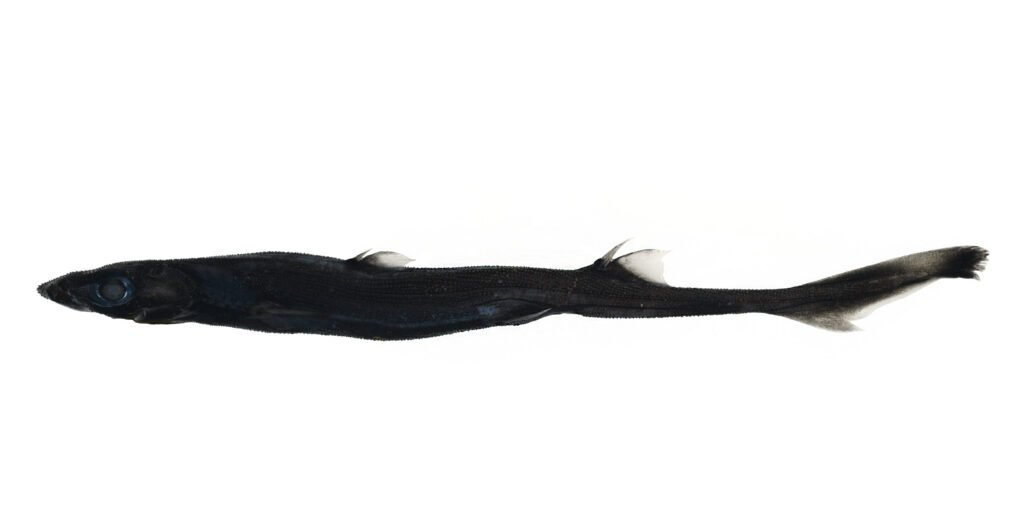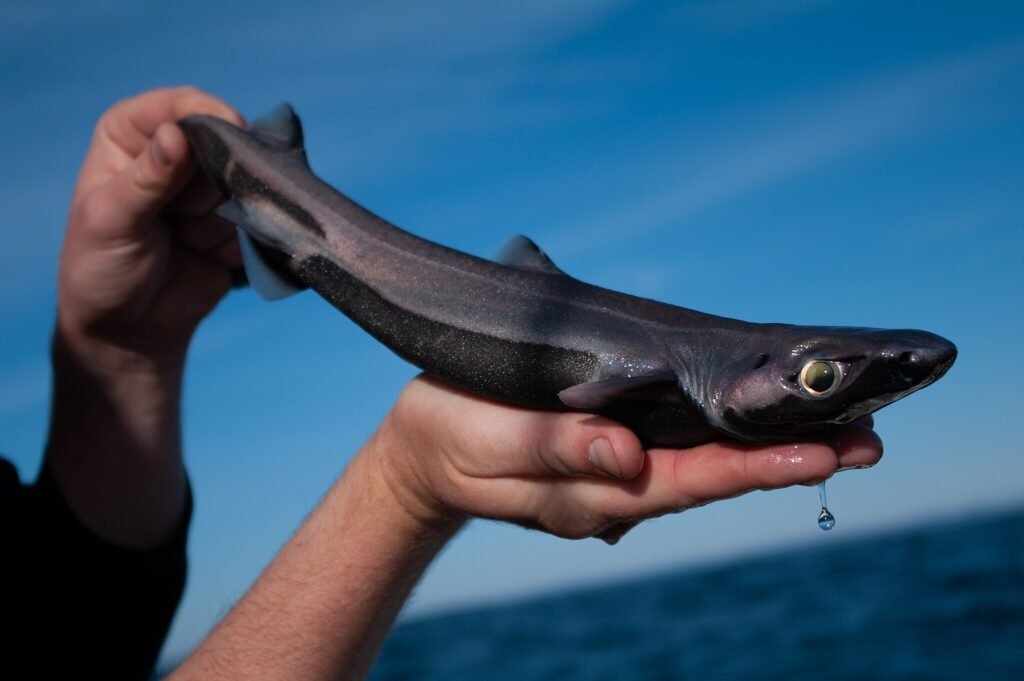The deep sea continues to surprise us. In a striking reminder that the ocean still holds many secrets, researchers off Western Australia have formally described two entirely new species: a lanternshark and a porcelain crab. These discoveries stem from a 2022 CSIRO-led marine expedition aboard RV Investigator and represent yet another chapter in the ongoing effort to map the biodiversity of Earth’s final frontier.
Lantern in the Depths: Etmopterus westraliensis

The first of the two new species is a small lanternshark, now named Etmopterus westraliensis (the West Australian Lanternshark). It was collected at depths reaching about 610 meters in the Gascoyne Marine Park area.
Despite its modest size—the largest known specimen measures around 407 mm—this shark is fascinating. It features large eyes adapted to dim light, a slender body, and dorsal fins each bearing a sharp spine.
Perhaps most captivating is its bioluminescence. Like other lanternsharks, E. westraliensis carries light-producing photophores along its belly and flanks. These light organs likely aid in camouflage, communication, or prey attraction in the pitch of deep ocean.
The species name “westraliensis” refers to Western Australia—an apt tribute to its region of discovery.
Interestingly, this marks the third shark species described from the same 2022 expedition, joining the Painted Hornshark and the Ridged-egg Catshark.
Among the Sea Pens: Porcellanella brevidentata
Turning to crustaceans, the newly described porcelain crab Porcellanella brevidentata was located at much shallower depths—down to 122 meters—along the Ningaloo coast. Tiny and delicate (just about 15 millimeters long), this crab has evolved a symbiotic relationship with sea pens (soft corals related to sea fans). It nestles within the “leaves” of its host, comfortably hidden in matching pale tones.
Unlike many crabs that snatch food with claws, porcelain crabs are filter feeders. They use specialized mouthparts lined with fine hairs to capture plankton and detritus as water flows by.
This species was identified through a combination of recent (2022) and older (2017) specimens gathered on CSIRO voyages.
More Than Two: The Bounty of the 2022 Voyage
These two additions are not lone surprises. The 2022 RV Investigator voyage has already yielded nearly 20 new species, including the intriguing Carnarvon Flapjack Octopus announced earlier in 2025. Scientists estimate that there could be as many as 600 more undiscovered species among the collected specimens. If confirmed, that is a staggering biodiversity payoff from one research expedition.
A new voyage is already being planned to survey the Coral Sea Marine Park, bringing together veteran and fresh collaborators to continue the work of uncovering deep-sea life.
Why It Matters: Beyond the “Cool New Species” Headlines
Discovering new species isn’t just about bragging rights. Each organism fills a gap in the tree of life, helping scientists understand evolutionary relationships, adaptations to extreme environments, and the ecological webs they inhabit.
Deep-sea habitats are vulnerable to threats like mining, climate change, and trawling, yet they remain among the least explored on Earth. Documenting what’s there is a critical first step toward conservation.
Moreover, bioluminescent animals and specialized filter feeders may inspire biomimetic technologies, novel chemical compounds, or new biological insights. Who knows what future benefits might lie hidden in these small, strange creatures?

Hi, I’m Andrew, and I come from India. Experienced content specialist with a passion for writing. My forte includes health and wellness, Travel, Animals, and Nature. A nature nomad, I am obsessed with mountains and love high-altitude trekking. I have been on several Himalayan treks in India including the Everest Base Camp in Nepal, a profound experience.




